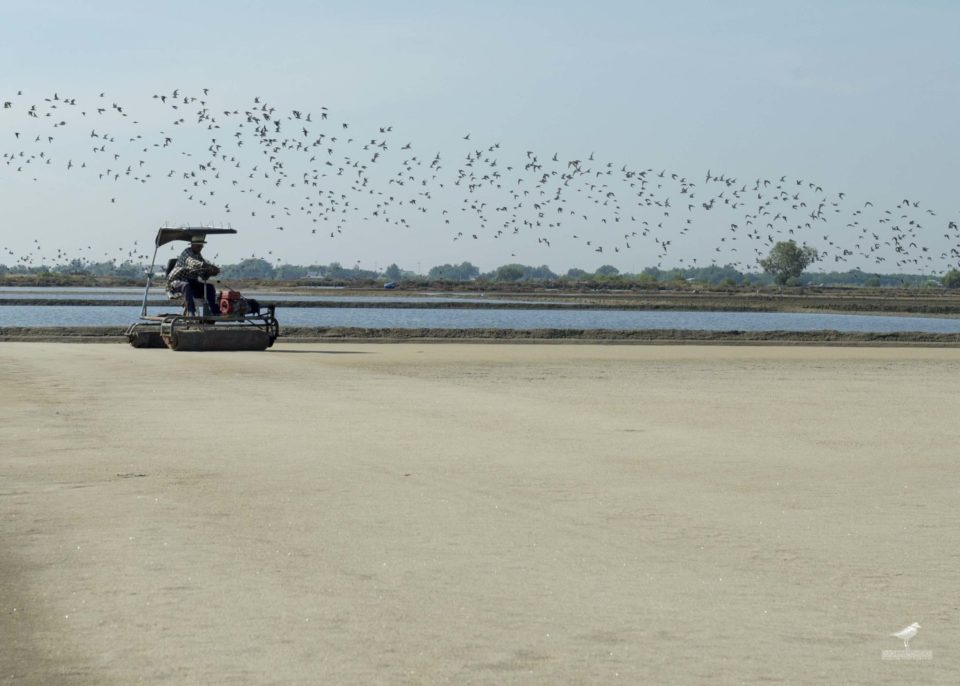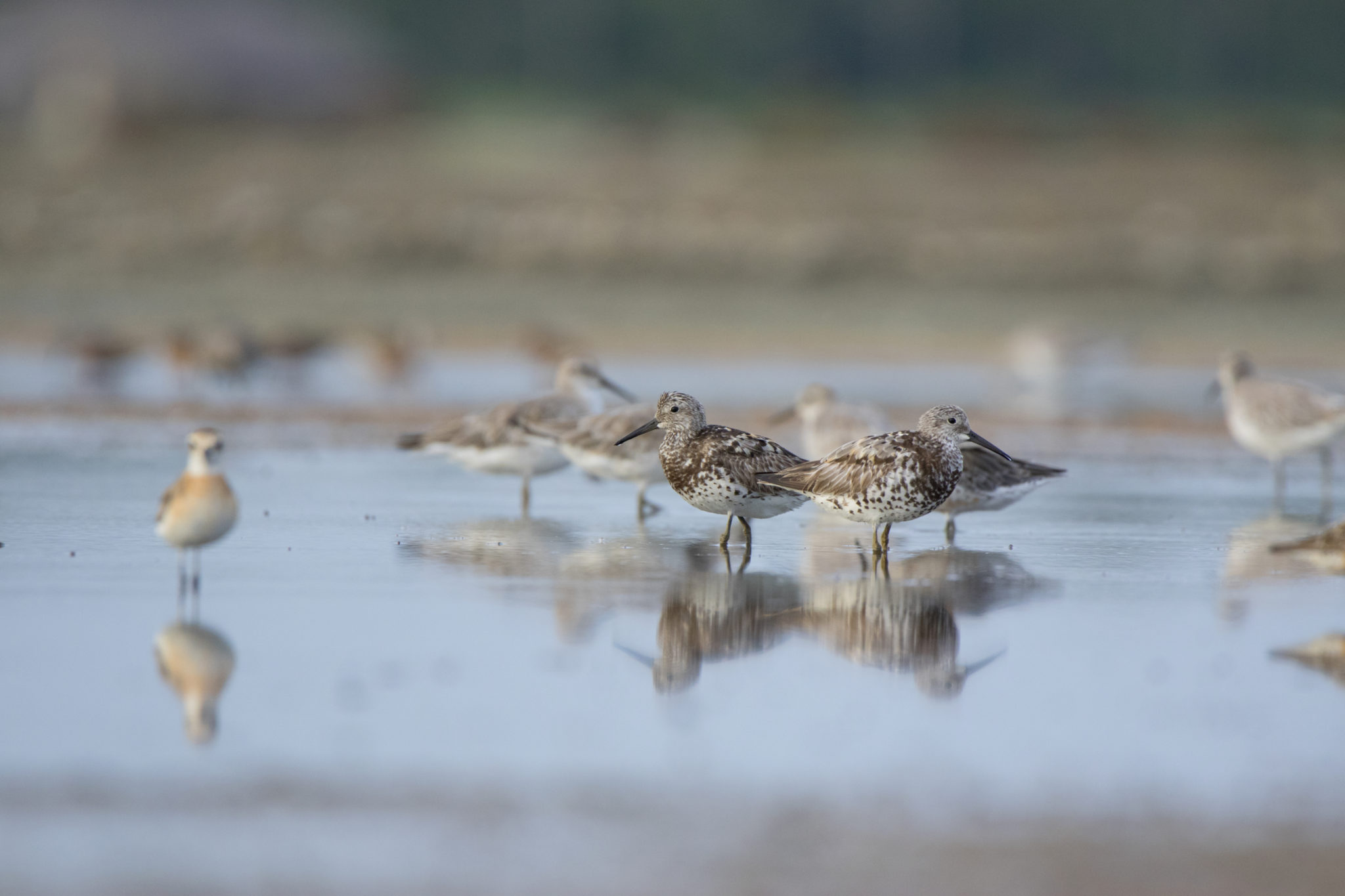
Should human-made wetland habitats be conserved to protect birds?
-
Asian Waterbird Census
-
International Waterbird Census
-
Species
Large numbers of shorebirds are making use of artificial wetlands, reports a recent study Navigating coasts of concrete: Pervasive use of artificial habitats by shorebirds in the Asia-Pacific. What this paper reveals is that artificial (i.e. human-made) wetlands such as aquaculture ponds, saltworks and rice paddies are now becoming vital life-lines for some migratory birds. Although these recent findings may demonstrate a need to expand the horizon of wetland protection, one thing is for certain: artificial wetlands will never offer the plethora of services that healthy natural wetlands can for the environment and people.
Dr Taej Mundkur, Senior Technical Officer at Wetlands International and a co-author of the study, states, “Our study shows that shorebirds are trying their best to adapt to landscape-scale manmade changes to the environment and to take advantage of new food resources and resting places”, but also warns that “use of such man-made habitats is not without risk as many birds are being illegally trapped and killed at many sites, while others feeding in agricultural fields risk exposure to a range of toxic pesticides.”

Findings
The study, which was recently published in the Journal Conservation Biology, found records of 83 shorebird species making use of 176 artificial sites along the Asian-Australasian Flyway (EAAF). Shorebird flocks were found on agricultural land, aquaculture farms (e.g. shrimp, fish or crab ponds), saltworks, constructed roosts, ports, ponds at power generation sites, coastal reclamation sites and wastewater treatment ponds. In some cases, shorebirds occurred on artificial habitats in very large numbers. However, shorebird abundance, species richness and density also varied significantly across artificial habitats. Furthermore, according to the data, threatened shorebird species, as well as larger-bodied, migratory and coastal specialist species were less likely to feed at artificial sites.
Conclusions
Overall, the study concluded that, while preserving and restoring the condition of all remaining natural waterbird habitat remains of tantamount importance, the widespread use of coastal artificial habitats by shorebirds (and other waterbirds) also warrants a concerted effort to integrate them into national conservation frameworks. Salt production sites may be cause for particular concern because they support large shorebird aggregations but are often at high risk of conversion to other land uses.
Results in the article were based on collated data from multiple countries and monitoring programmes as well as collated expert knowledge. Valuable information was provided through the large national volunteer networks in East and Southeast Asia and Australasia that contribute to the annual Asian Waterbird Census, which is regionally coordinated by Wetlands International.

“Navigating coasts of concrete: Pervasive use of artificial habitats by shorebirds in the Asia-Pacific.” can be accessed here.
Leading picture by ©Ayuwat Jearwattanakanok.
